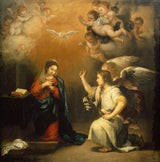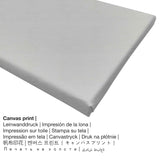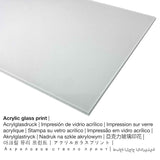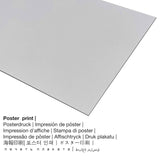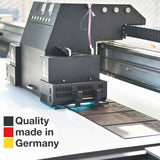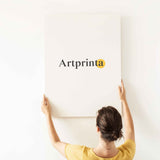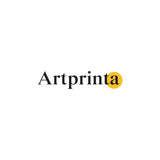Bartolomé Esteban Murillo, 1660 - Mkpọsa na Virgin - ọmarịcha nka.
Ụtụ gụnyere. Mbupu gbakọrọ na ndenye ọpụpụ.
Ihe osise na aha "Nkwupụta nke Virgin"dị ka akwụkwọ nka nke gị
Ihe nka nka karịrị afọ 360 Nkwupụta nke Virgin e sere ya Baroque onye na-ese ihe Bartolome Esteban Murillo n’afọ 1660. Ọ bụ na nchịkọta nke Rijksmuseum. Site n'ikike nke Rijksmuseum (nwere ikike - ngalaba ọha).Moreover, the artwork has the following creditline: . Moreover, alignment of the digital reproduction is in square format na nwere akụkụ ruru nke 1: 1, which means that the length is equal to the width. The painter Bartolomé Esteban Murillo was a European artist from Spain, whose art style can be classified as Baroque. The European artist lived for 65 afọ and was born in 1617 in Seville and passed away in the year 1682 in Seville.
Ozi nka site na webụsaịtị ihe ngosi nka (© - site na Rijksmuseum - www.rijksmuseum.nl)
The Annunciation. Mary turns to the angel kneeling before her. The angel has a branch with lilies in the hand. Mary is kneeling in front of a table with an open book beaten. In the air, the dove of the Holy Spirit and angels on clouds.
Ozi ahaziri na ọrụ nka
| Aha nka: | "Nkwusa nye Virgin" |
| nhazi ọkwa: | sere |
| Otu izugbe: | nka ochie |
| oge: | 17th narị afọ |
| Afọ okike: | 1660 |
| Afọ nka: | gbara afọ 360 |
| Ụlọ ihe ngosi nka / ebe: | Rijksmuseum |
| Ebe ebe ngosi nka: | Amsterdam, Netherlands |
| Ebe nrụọrụ weebụ ihe ngosi nka: | www.rijksmuseum.nl |
| Licensedị ikike: | ngalaba ọha |
| Site n'aka: | Rijksmuseum |
Ihe omuma ihe nka
| Ihe nkiri: | Bartolome Esteban Murillo |
| Gender: | nwoke |
| Obodo onye nka: | spanish |
| Ọrụ nke onye na-ese ihe: | onye na-ese ihe |
| Country: | Spain |
| Nhazi nke onye nka: | nna ukwu ochie |
| Ụdị nka: | Baroque |
| Ndụ: | 65 afọ |
| Afọ amụrụ: | 1617 |
| Amụrụ na (ebe): | Seville |
| Nwuru: | 1682 |
| Nwuru na (ebe): | Seville |
Họrọ ihe gị
In the dropdown lists next to the product offering you can choose a material and a sizeaccording to your individual preferences. You can choose among the following product customization options:
- Ihe odide acrylic glass: The acrylic glass print, which is often denoted as a print on plexiglass, transforms an artwork into stunning décor and is a great alternative option to dibond and canvas art prints. The work of art is made with the help of modern UV printing technology. This makes sharp and rich print colors. The great advantage of a plexiglass fine art copy is that contrasts plus small painting details will be identifiable because of the fine tonal gradation.
- Mbipụta kwaaji: The canvas direct print is a printed canvas stretched on a wooden frame. A printed canvas of your favorite masterpiece will let you turn your new art print into a large size artwork like you know from art galleries. Canvas prints are relatively low in weight. This means, it is quite simple to hang your Canvas print without any wall-mounts. Because of thatcanvas prints are suited for all types of walls.
- Aluminom dibond mbipụta (ọla): This is a metal print manufactured on aluminium dibond material with an outstanding depth. The Aluminium Dibond Print is your perfect start to fine art reproductions on aluminum. The white and bright components of the original work of art shine with a silk gloss, however without the glare.
- Mpempe akwụkwọ ederede (akwa akwa akwa): Our poster print is a printed flat canvas with a slightly rough structure on the surface, which resembles the actual work of art. It is suited for placing the fine art print with a special frame. Please keep in mind, that depending on the absolute size of the poster we add a white margin between 2-6cm round about the print motif in order to facilitate the framing with a custom frame.
Nkọwa akụkọ ahaziri ahazi
| Nkewa edemede: | mmepụta nka |
| Usoro mmeputakwa: | dijitalụ mmeputakwa |
| Usoro mmepụta: | mbipụta dijitalụ |
| Ihe ngosi: | arụpụtara na Germany |
| Ụdị ngwaahịa: | mmepụta ihe na-achọ |
| Ojiji ngwaahịa: | Nhazi ụlọ, mkpokọta nka (mmeputakwa) |
| Ndepụta: | usoro square |
| Ụdị anya: | 1: 1 |
| Nsonaazụ nke oke onyonyo: | ogologo ya na obosara |
| Akụrụngwa ị nwere ike ịhọrọ: | ígwè obibi akwụkwọ (aluminium dibond), akwụkwọ mmado (akwụkwọ kwaaji), mbipụta enyo acrylic (nke nwere ezigbo mkpuchi iko), mbipụta akwụkwọ. |
| Kanvas n'elu etiti ihe ndọtị (mbipụta akwa akwa): | 20x20cm - 8x8 ", 30x30cm - 12x12", 50x50cm - 20x20", 70x70cm - 28x28", 100x100cm - 39x39", 150x150cm - 59x59" |
| Mbipụta iko acrylic (nke nwere ezigbo mkpuchi iko): | 20x20cm - 8x8 ", 30x30cm - 12x12", 50x50cm - 20x20", 70x70cm - 28x28", 100x100cm - 39x39", 150x150cm - 59x59" |
| Mpempe akwụkwọ mmado (akwụkwọ kwaaji) nha: | 30x30cm - 12x12", 50x50cm - 20x20", 70x70cm - 28x28", 100x100cm - 39x39" |
| Mbipụta nke aluminom (ihe aluminom): | 20x20cm - 8x8", 30x30cm - 12x12", 50x50cm - 20x20", 70x70cm - 28x28", 100x100cm - 39x39" |
| Nhazi nke nka nka: | mbipụta nka na-enweghị isi |
Ozi dị mkpa: We try whatever we can to depict the art products as clearly as possible and to exhibit them visually in our shop. Nonetheless, the pigments of the print products and the printing might diverge slightly from the presentation on the screen. Depending on your settings of your screen and the condition of the surface, color pigments may not be printed as realistically as the digital version. Bearing in mind that the fine art prints are processed and printed manually, there might also be minor variations in the exact position and the size of the motif.
© Nwebiisinka nke - Artprinta.com

